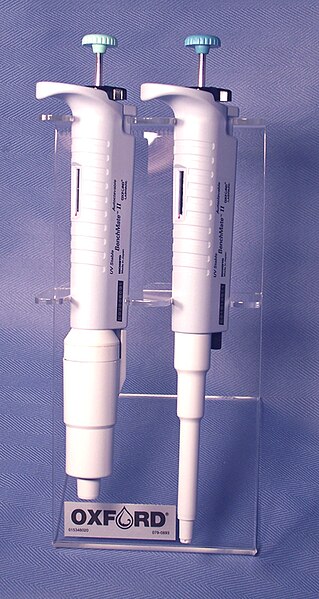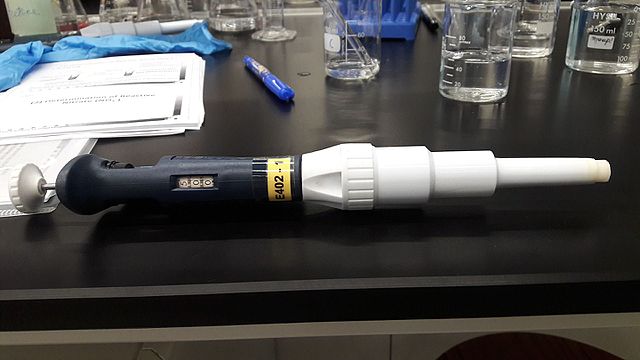A pipette is a type of laboratory tool commonly used in chemistry and biology to transport a measured volume of liquid, often as a media dispenser. Pipettes come in several designs for various purposes with differing levels of accuracy and precision, from single piece glass pipettes to more complex adjustable or electronic pipettes. Many pipette types work by creating a partial vacuum above the liquid-holding chamber and selectively releasing this vacuum to draw up and dispense liquid. Measurement accuracy varies greatly depending on the instrument.
Clockwise from top left: various sizes of micropipettes; a graduated serological pipette attached to an electronic manual pipetter; two Pasteur pipettes.
Single-Channel Pipettes designed to handle 1–5 ml and 100–1000 µl with locking system
A 5,000 μl (5 ml) pipette, with the volume to be transferred indicated. 500 means that the amount transferred is 5,000 μl.
A 1,000 μl (1 ml) pipette, with the volume to be transferred indicated.
A media dispenser or a culture media dispenser is a device for repeatedly delivering small fixed volumes of liquid such as a laboratory growth medium like molten agar or caustic or volatile solvents like toluene into a series of receptacles. It is often important that such dispensers operate without biological or chemical contamination, and so must be internally sealed from the environment and designed for easy cleaning and sterilization before use. At a minimum, a media dispenser consists of some kind of pump connected to a length of discharge tubing or a spout. Dispensers used in laboratories are also frequently connected to microcontrollers to regulate the speed and volume of the medium as it leaves the pump.
Syringe pump
Sterile media dispenser with electromagnetic inductive pump manufactured by Tritech Research
A bottle top media dispenser
A single syringe pump








